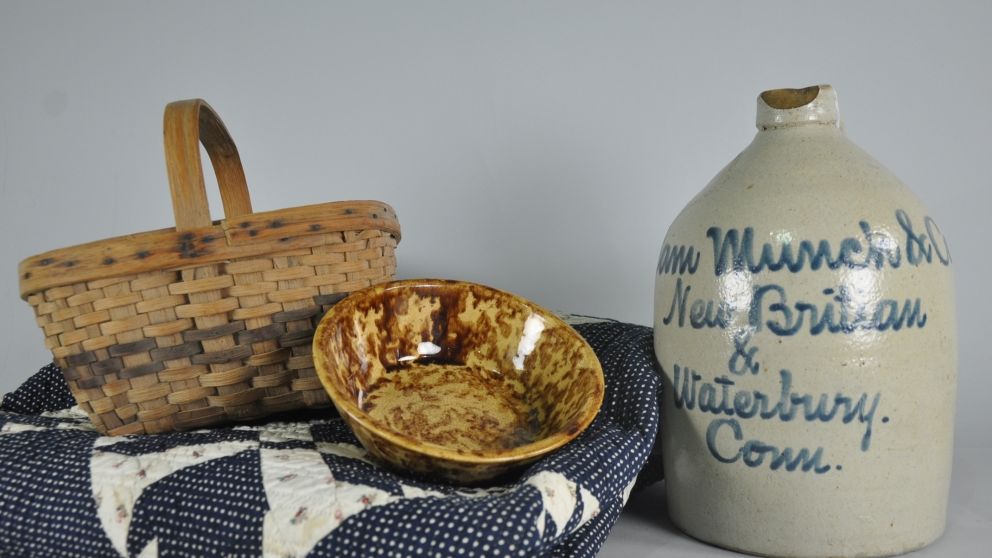Quilts: It’s All in a Name

Quilts are able to insulate due to its construction, which nearly always consists of a base, a central insulating layer, and a top piece that is often decorative. In general, there are “three basic types - plain, pieced, and applique-named for the dominant technique used in fashioning the quilt top.” A plain quilt is just that, the function is generally felt to have been the central goal, as opposed to decoration. The tops were often a single piece of fabric, and if they were enhanced it was through embroidery, not the addition of other fabrics. Plain quilts could be enhanced to become applique quilts, when, “(the) quilter appliqued and sewed cut pieces of fabric to a plain top to create an overall design, (these) were generally fancier, more personal, and more formal in design than pieced quilts.”
Pieced quilts are what most Americans think of when they think of a quilt. They were literally pieced together with fabric scraps. The pieces were arranged into carefully thought out patterns, keeping color and fabric pattern in mind. It was in the United States that pieced quilts gained a foothold. We tend to think of recycling and up-cycling as modern choices, but in actual fact necessity and thriftiness prompted women to create pieced quilts as far back as the colonial period. By keeping scraps and integrating them into a functional object, creativity and decoration could become part of daily life. That said, it is important to remember that function was perhaps generally more valued than decoration, “since the worn pieces, being of fairly small size, could be replaced without great difficulty, mending was relatively easy.”
Quilting was, and has mostly remained, within the feminine sphere. The amount of time and effort that went into a quilt made it the perfect opportunity to not only show off one’s skill, as witnessed with the success of 19th century quilt competitions, but also the chance for women to come together and work on a project side-by-side at quilting bees. Quilts are expressive in both overt and inconspicuous ways. It is not uncommon for women to “inscribe” their quilts with their name, a year, and a title. But still, there are just as many quilts with no trace of the maker, other than the stitching and fabrics that went into them. Regional differences can also be witnessed in quilt designs and patterns. Named patterns that are widely used and recognized are often tweaked by individuals, creating vernacular hybrids. Fabric and color choice contributed to the expressive choices each quilter brought to any project. Even today, in the 21st century, the tradition of women making quilts as gifts, family keepsakes, and works of art is still alive and well. Variations upon variations of traditional patterns have evolved.
If you are interested in collecting quilts, but you aren’t quite sure where to start, here are some great resources you can check out:
Stella Rubin’s Quilt Directory: http://www.stellarubinantiques.com/directory/Quilts.html
The MESDA publication: “Quilts, Coverlets, & Counterpanes,” 1997
The Knopf Collector’s Guide: “Quilts, Coverlets, Rugs, & Samplers,” 1982
Robert Shaw’s “America’s Traditional Crafts,” 1993
Shaw, Robert. America’s Traditional Crafts. New York: MacMillan Publishing Company, 1993.





